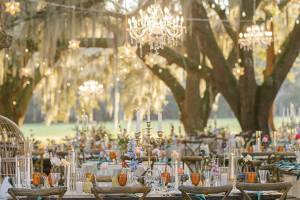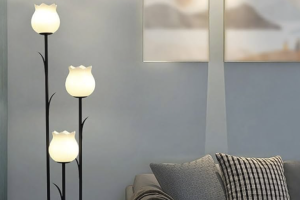Adding a Touch of Elegance: The Beauty and Benefits of Ornamental Flowers in Your Garden
Introduction to Ornamental Flowers and Their Importance in Garden Design
Ornamental flowers are a key component of garden design, adding beauty, color, and fragrance to outdoor spaces. These flowers are cultivated for their aesthetic appeal rather than for practical purposes such as food or medicine. They come in a wide variety of shapes, sizes, and colors, making them versatile and adaptable to different garden styles and preferences.
The importance of ornamental flowers in garden design cannot be overstated. They serve as the focal point of a garden, drawing the eye and creating visual interest. They also contribute to the overall ambiance and atmosphere of the space, whether it be a formal, structured garden or a wild, naturalistic landscape.
The history of ornamental flowers dates back thousands of years. Ancient civilizations such as the Egyptians, Greeks, and Romans all had a deep appreciation for the beauty of flowers and incorporated them into their gardens and art. In medieval Europe, gardens were often designed with religious symbolism in mind, with flowers representing virtues or biblical stories. Today, ornamental flowers continue to be an integral part of garden design, bringing joy and beauty to outdoor spaces.
The Power of Color: How Ornamental Flowers Enhance Aesthetic Appeal
One of the most powerful aspects of ornamental flowers is their ability to enhance the aesthetic appeal of a garden through color. Color has a profound impact on our emotions and can create different moods and atmospheres in a space. By carefully selecting and arranging ornamental flowers with vibrant colors, you can create a visually stunning garden that evokes specific feelings or themes.
When choosing colors for your garden, it’s important to consider the overall style and mood you want to achieve. Warm colors such as reds, oranges, and yellows create a sense of energy and excitement, while cool colors like blues and purples evoke calmness and tranquility. Complementary colors (those opposite each other on the color wheel) create a striking contrast, while analogous colors (those next to each other on the color wheel) create a harmonious and cohesive look.
There are countless ornamental flowers with vibrant colors to choose from. Some examples include roses in various shades of red, pink, and yellow; tulips in a rainbow of colors; and dahlias with their bold and vibrant hues. By incorporating these flowers into your garden, you can create a visually stunning display that will delight the senses.
Creating a Focal Point: Using Ornamental Flowers to Draw the Eye
Focal points are an important element of garden design as they help to create visual interest and draw the eye. Ornamental flowers can be used effectively to create focal points in a garden, whether it be through their size, shape, or color.
When creating a focal point using ornamental flowers, it’s important to consider the overall layout and design of your garden. You want the focal point to be visible from different angles and to stand out from the surrounding plants and elements. This can be achieved by placing the flowers in a prominent location, such as at the center of a garden bed or along a pathway.
There are many ornamental flowers that make great focal points. For example, tall and dramatic flowers such as delphiniums or hollyhocks can create a sense of height and drama in a garden. Flowers with unique shapes or structures, such as orchids or proteas, can also serve as eye-catching focal points. Additionally, flowers with vibrant colors or contrasting hues can draw attention and create visual impact.
The Benefits of Ornamental Flowers for Pollinators and Wildlife
Ornamental flowers not only enhance the beauty of a garden but also play a crucial role in supporting pollinators and wildlife. Many ornamental flowers are rich in nectar and pollen, making them attractive food sources for bees, butterflies, and other pollinators. By planting these flowers in your garden, you can help to support these important creatures and contribute to the health of the ecosystem.
Pollinators, such as bees and butterflies, play a vital role in the reproduction of flowering plants. They transfer pollen from the male parts of a flower to the female parts, allowing for fertilization and the production of seeds. Without pollinators, many plants would not be able to reproduce and would eventually die out.
In addition to supporting pollinators, ornamental flowers also provide habitat and food sources for other wildlife such as birds and insects. Birds may use flowers as a source of nectar or as a place to build nests, while insects such as ladybugs and lacewings may feed on pests that can damage plants.
Some examples of ornamental flowers that attract pollinators and wildlife include lavender, coneflowers, and sunflowers. These flowers are not only beautiful but also provide valuable resources for bees, butterflies, and other creatures.
Low-Maintenance Options: Choosing Ornamental Flowers That Thrive in Your Climate
When choosing ornamental flowers for your garden, it’s important to consider their maintenance requirements. Some flowers require more care and attention than others, making them better suited for experienced gardeners or those with more time to devote to their gardens. However, there are also many low-maintenance options available that can thrive in a variety of climates and conditions.
When choosing low-maintenance ornamental flowers, it’s important to consider factors such as water requirements, sunlight exposure, and soil conditions. Some flowers are more drought-tolerant and can withstand periods of dryness, while others require regular watering. Similarly, some flowers prefer full sun exposure, while others can tolerate shade.
Examples of low-maintenance ornamental flowers for different climates include succulents such as sedums and agaves for dry climates, daylilies and hostas for shady areas, and native wildflowers for regions with specific soil and climate conditions. By choosing flowers that are well-suited to your climate and conditions, you can ensure that your garden thrives with minimal effort.
Ornamental Flowers for Every Season: Year-Round Beauty in Your Garden
One of the great advantages of using ornamental flowers in garden design is the ability to create year-round beauty. By carefully selecting flowers that bloom in different seasons, you can ensure that your garden is always filled with color and life, regardless of the time of year.
When choosing ornamental flowers for each season, it’s important to consider their bloom times and duration. Some flowers may only bloom for a few weeks or months, while others may have a longer blooming period. By selecting a combination of early, mid, and late-season bloomers, you can create a continuous display of color throughout the year.
Examples of ornamental flowers for each season include daffodils and tulips for spring, roses and peonies for summer, asters and mums for fall, and pansies and hellebores for winter. By incorporating these flowers into your garden, you can enjoy a beautiful and ever-changing landscape throughout the year.
To create a year-round garden using ornamental flowers, it’s important to plan ahead and consider the overall design and layout of your garden. By strategically placing different flowers throughout the space, you can ensure that there is always something in bloom, no matter the season.
How to Incorporate Ornamental Flowers into Existing Garden Designs
If you already have an existing garden design but want to incorporate ornamental flowers, there are several tips to keep in mind. First, consider the overall style and theme of your garden and choose flowers that complement or enhance this aesthetic. For example, if you have a cottage-style garden, you may want to choose flowers with a more informal and romantic feel, such as roses or peonies. On the other hand, if you have a modern or minimalist garden, you may want to choose flowers with clean lines and simple shapes, such as lilies or irises.
Second, consider the existing layout and structure of your garden and choose flowers that will fit seamlessly into the space. For example, if you have a small garden with limited space, you may want to choose compact or trailing flowers that won’t overwhelm the area. On the other hand, if you have a large garden with open spaces, you may want to choose taller or more dramatic flowers that can serve as focal points.
Finally, consider the maintenance requirements of the flowers you choose and ensure that they are compatible with your existing garden care routine. If you already have a busy schedule or limited time to devote to gardening, you may want to choose low-maintenance flowers that require minimal care.
Ornamental Flowers for Small Spaces: Maximizing Beauty in Limited Areas
Even if you have a small outdoor space, you can still enjoy the beauty of ornamental flowers. By choosing flowers that are well-suited to small spaces and using creative design techniques, you can maximize beauty in limited areas.
When choosing ornamental flowers for small spaces, it’s important to consider their size and growth habit. Compact or dwarf varieties are often better suited for small gardens or containers, as they won’t overwhelm the space. Additionally, trailing or cascading flowers can be used to add vertical interest and create the illusion of more space.
To maximize beauty in limited areas, consider using vertical gardening techniques such as trellises or hanging baskets. These can be used to grow climbing or trailing flowers, allowing you to make use of vertical space and create a lush and vibrant display.
Examples of ornamental flowers that are great for small spaces include petunias, geraniums, and marigolds. These flowers are compact, easy to grow, and provide a burst of color in small gardens or containers.
The Health Benefits of Gardening with Ornamental Flowers
Gardening with ornamental flowers not only enhances the beauty of your outdoor space but also provides numerous health benefits. Both physical and mental health can be improved through the act of gardening, making it a rewarding and therapeutic activity.
Physically, gardening is a great form of exercise. Activities such as digging, planting, and weeding can help to improve strength, flexibility, and cardiovascular health. Spending time outdoors in the fresh air and sunlight also provides a natural source of vitamin D, which is essential for bone health and immune function.
Mentally, gardening has been shown to reduce stress and improve overall well-being. The act of tending to plants and watching them grow can be calming and meditative, providing a sense of purpose and accomplishment. Gardening has also been linked to improved mood, increased self-esteem, and reduced symptoms of anxiety and depression.
Examples of how gardening with ornamental flowers can improve your health include the physical activity involved in planting and maintaining flower beds, the mental relaxation that comes from spending time in nature, and the sense of pride and satisfaction that comes from watching your flowers bloom and thrive.
The Timeless Elegance and Endless Possibilities of Ornamental Flowers in Your Garden
In conclusion, ornamental flowers are an essential element of garden design, adding beauty, color, and fragrance to outdoor spaces. They have a long history dating back thousands of years and continue to be an integral part of gardens around the world.
The power of color in ornamental flowers enhances the aesthetic appeal of a garden, creating different moods and atmospheres. By carefully selecting colors that complement each other and the overall style of your garden, you can create a visually stunning display.
Ornamental flowers can also be used to create focal points in a garden, drawing the eye and creating visual interest. By choosing flowers with unique shapes, sizes, or colors, you can create a striking focal point that becomes the centerpiece of your garden.
In addition to their aesthetic appeal, ornamental flowers also provide important benefits for pollinators and wildlife. By planting flowers that attract bees, butterflies, and other creatures, you can support the health of the ecosystem and contribute to the conservation of these important species.
When choosing ornamental flowers for your garden, it’s important to consider their maintenance requirements and suitability for your climate. By selecting low-maintenance options that thrive in your specific conditions, you can ensure that your garden remains beautiful with minimal effort.
Ornamental flowers also offer the opportunity to create year-round beauty in your garden. By selecting flowers that bloom in different seasons and strategically placing them throughout the space, you can enjoy a continuous display of color and life.
If you already have an existing garden design, there are ways to incorporate ornamental flowers seamlessly. By considering the style and layout of your garden and choosing flowers that complement or enhance these elements, you can create a cohesive and visually appealing space.
Even in small spaces, ornamental flowers can be used effectively to maximize beauty. By choosing compact or trailing varieties and using vertical gardening techniques, you can create a lush and vibrant display in limited areas.
Gardening with ornamental flowers also provides numerous health benefits. Both physical and mental health can be improved through the act of gardening, making it a rewarding and therapeutic activity.
In conclusion, the timeless elegance and endless possibilities of ornamental flowers make them an essential element of garden design. Whether you’re looking to enhance the aesthetic appeal of your outdoor space, support pollinators and wildlife, or improve your own health and well-being, ornamental flowers offer a wealth of benefits and opportunities. So go ahead, plant some flowers and watch your garden come to life with color, fragrance, and beauty.






